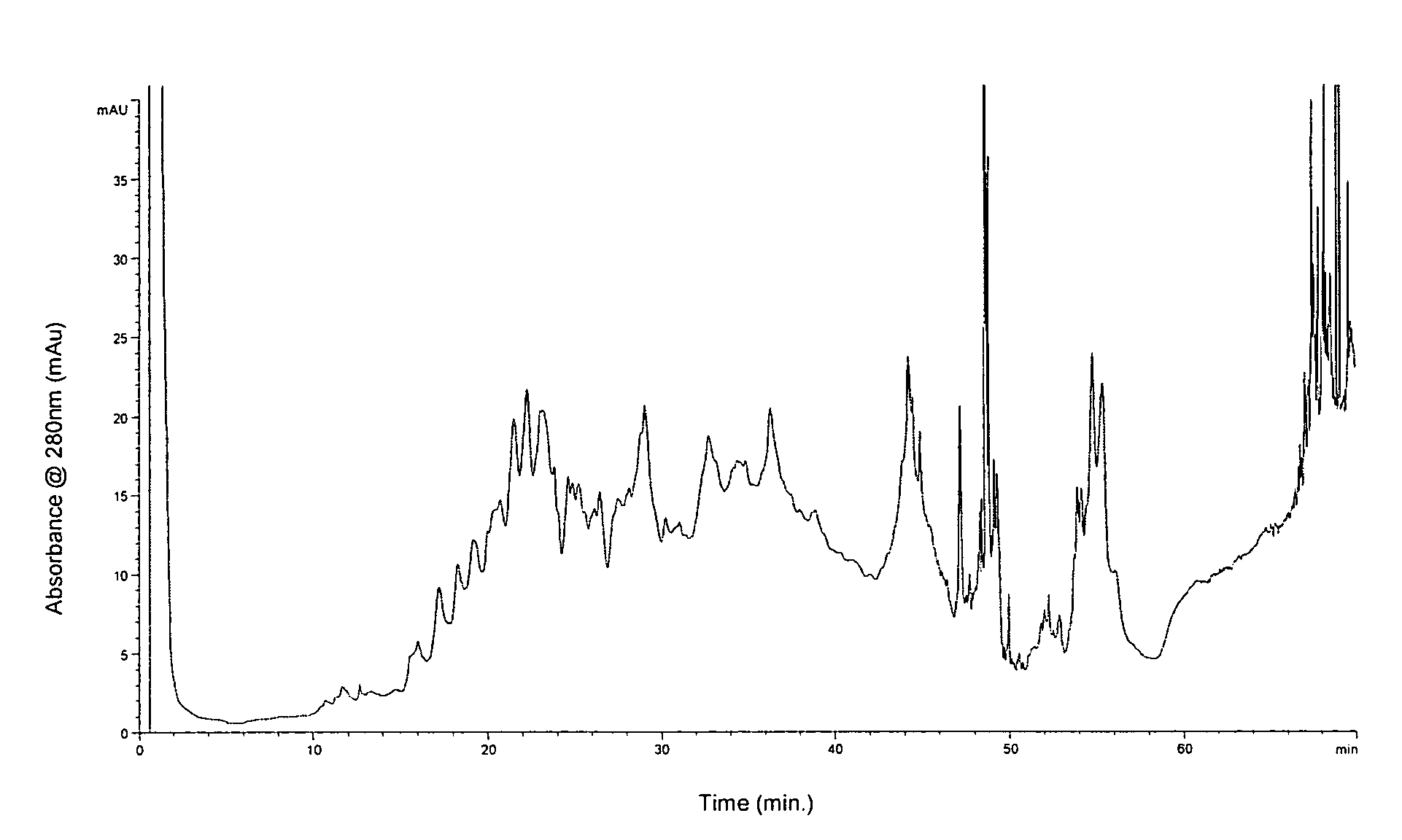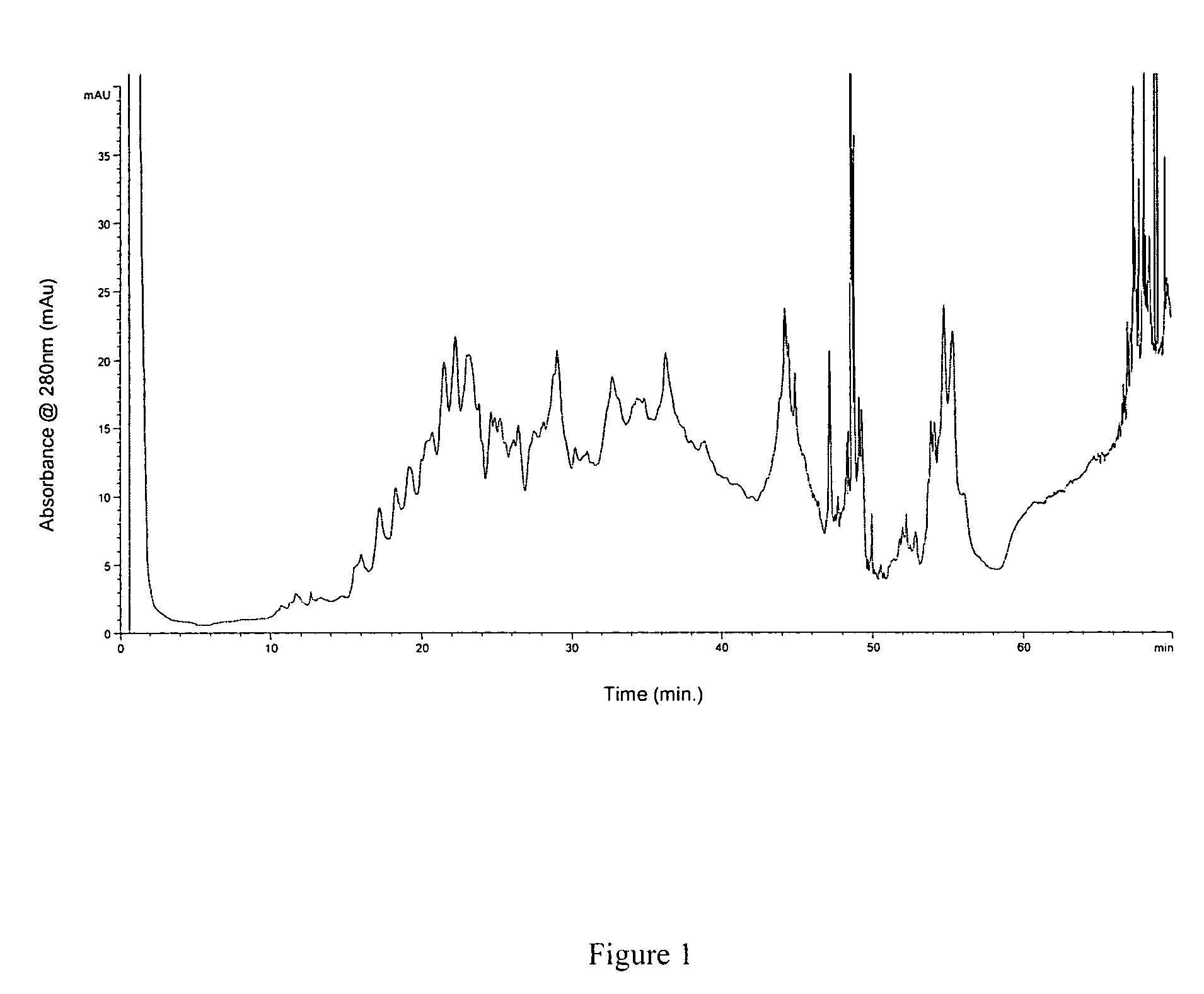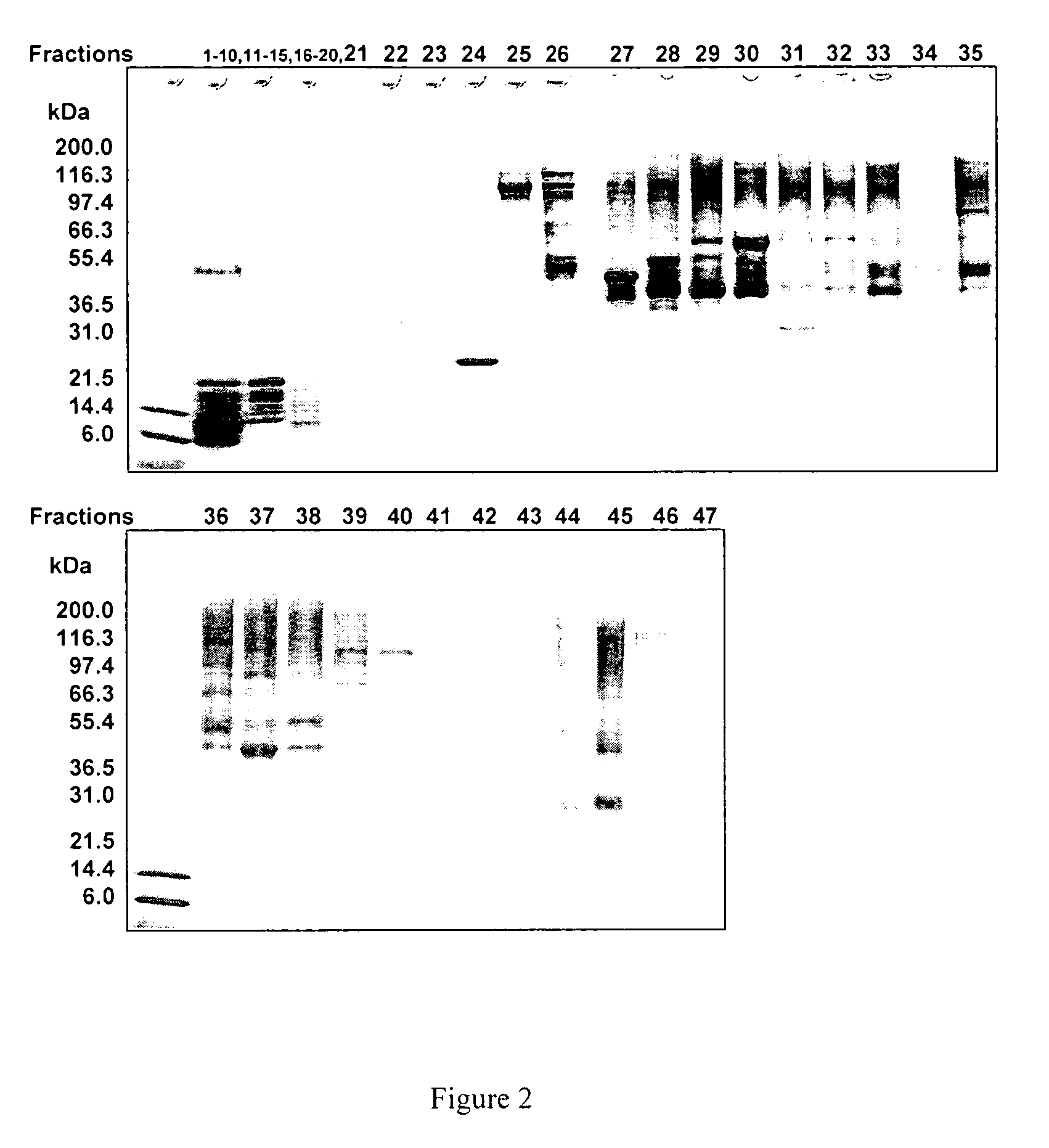Methods and systems for on-column protein delipidation
a protein and column technology, applied in the field of chromatography, can solve the problems of lipids present in biological extracts, difficult to isolate and separate, and complex proteomic samples, such as human serum, to achieve the effect of reducing protein loss, high run-to-run reproducibility, and robust sample processing
- Summary
- Abstract
- Description
- Claims
- Application Information
AI Technical Summary
Benefits of technology
Problems solved by technology
Method used
Image
Examples
examples
[0110]Materials Used: HPLC-grade acetonitrile and 2-propanol were purchased from VWR International (West Chester, Pa.). Formic acid (98-100%) was obtained from Sigma-Aldrich. The water used was Milli-Q grade (Millipore, Bedford, Mass.). Trifluoroacetic acid and trifluoroethanol were purchased from Sigma (St. Louis, Mo.). Sequencing grade-modified trypsin was from Promega (Madison, Wis.). Trypsin In-Gel Digestion Kit was from Agilent (Palo Alto, Calif.). The 50 ml conical BD polystyrene tubes were obtained from VWR International. Pre-cast gels were obtained from Invitrogen (Carlsbad, Calif.). The reversed phase column used in this study was a 4.6 mm×50 mm ID macroporous reversed phase C18 column from Agilent Technologies (Wilmington, Del.). The 5 peptide mixture used is the Alberta Peptide Institute Standard RPS-P0010 (API, Edmonton, AB).
[0111]Preparation of lipid raft-enriched fraction: The lipid raft-enriched fraction was prepared by detergent extraction on ice and flotation on a s...
PUM
| Property | Measurement | Unit |
|---|---|---|
| temperature | aaaaa | aaaaa |
| weight % | aaaaa | aaaaa |
| weight % | aaaaa | aaaaa |
Abstract
Description
Claims
Application Information
 Login to View More
Login to View More - R&D
- Intellectual Property
- Life Sciences
- Materials
- Tech Scout
- Unparalleled Data Quality
- Higher Quality Content
- 60% Fewer Hallucinations
Browse by: Latest US Patents, China's latest patents, Technical Efficacy Thesaurus, Application Domain, Technology Topic, Popular Technical Reports.
© 2025 PatSnap. All rights reserved.Legal|Privacy policy|Modern Slavery Act Transparency Statement|Sitemap|About US| Contact US: help@patsnap.com



